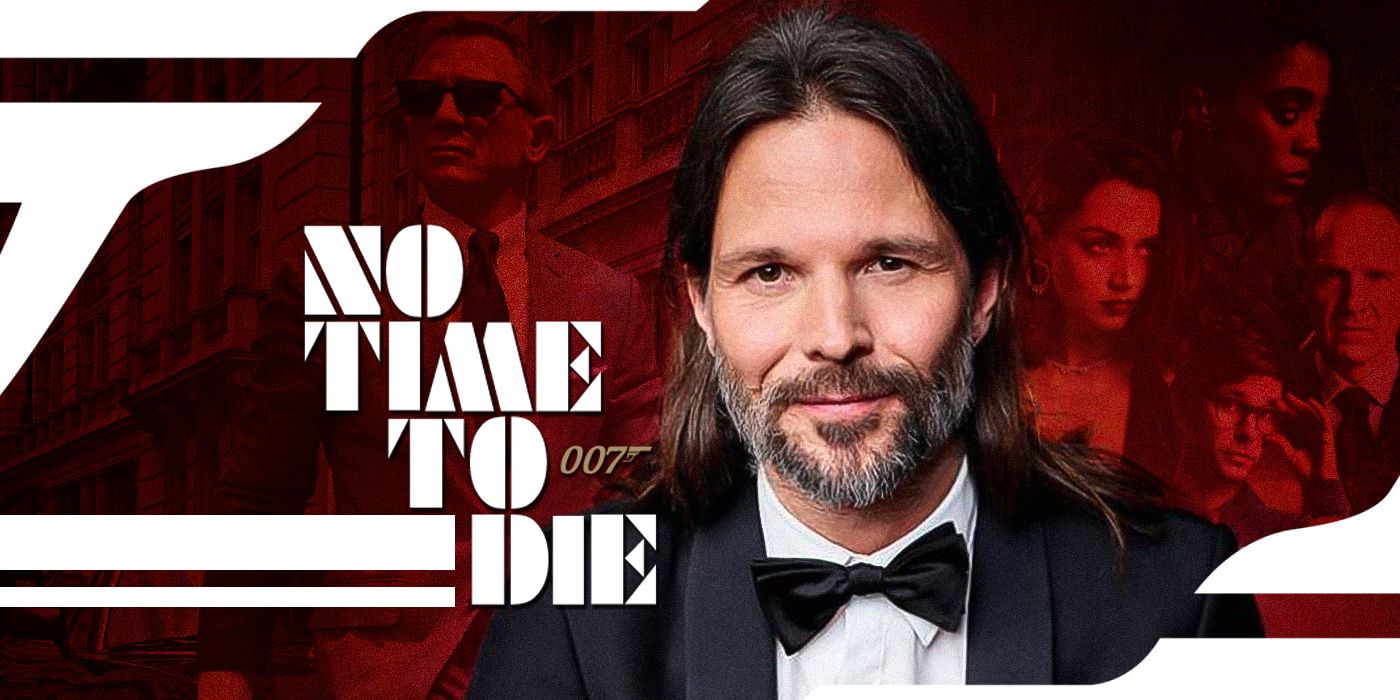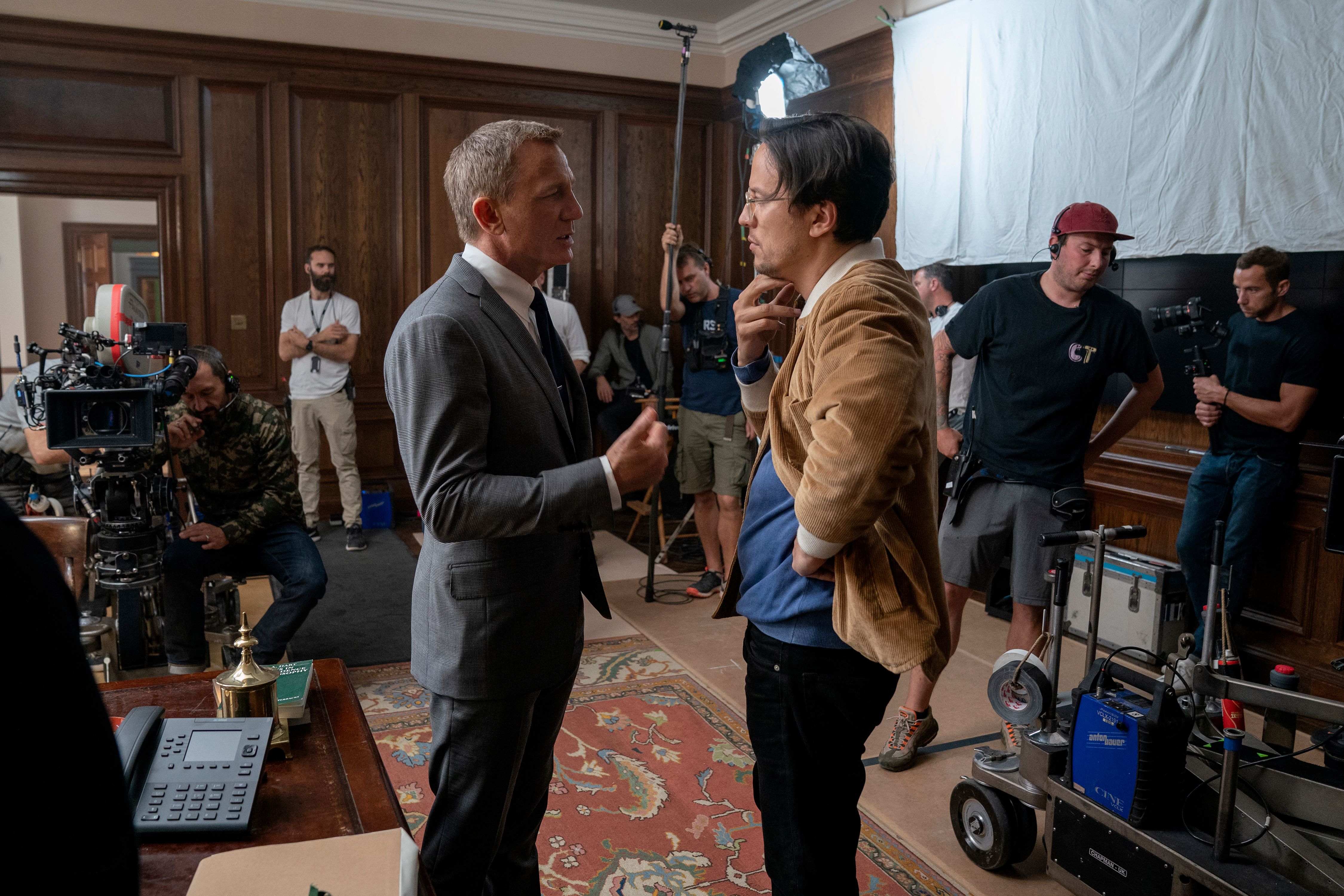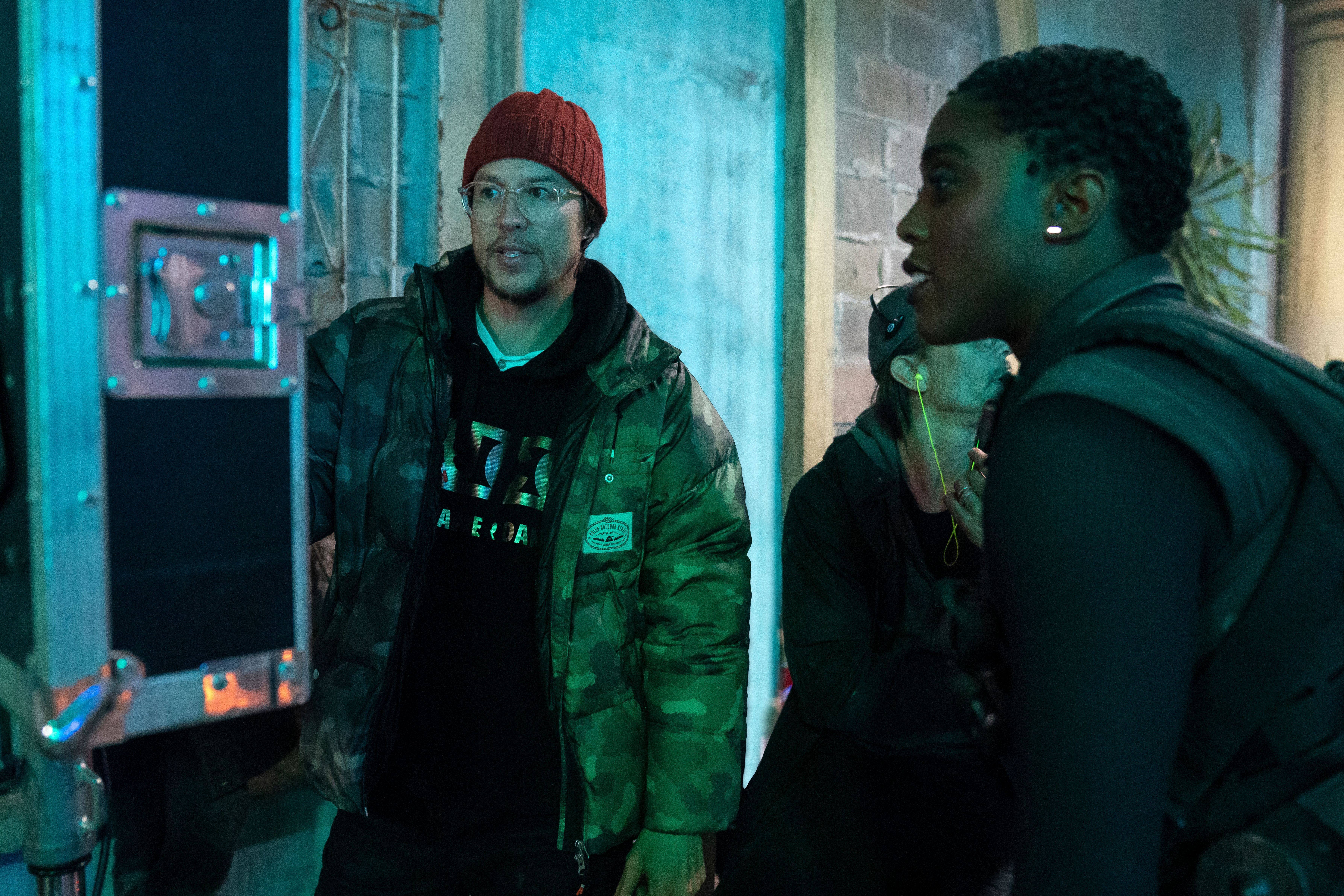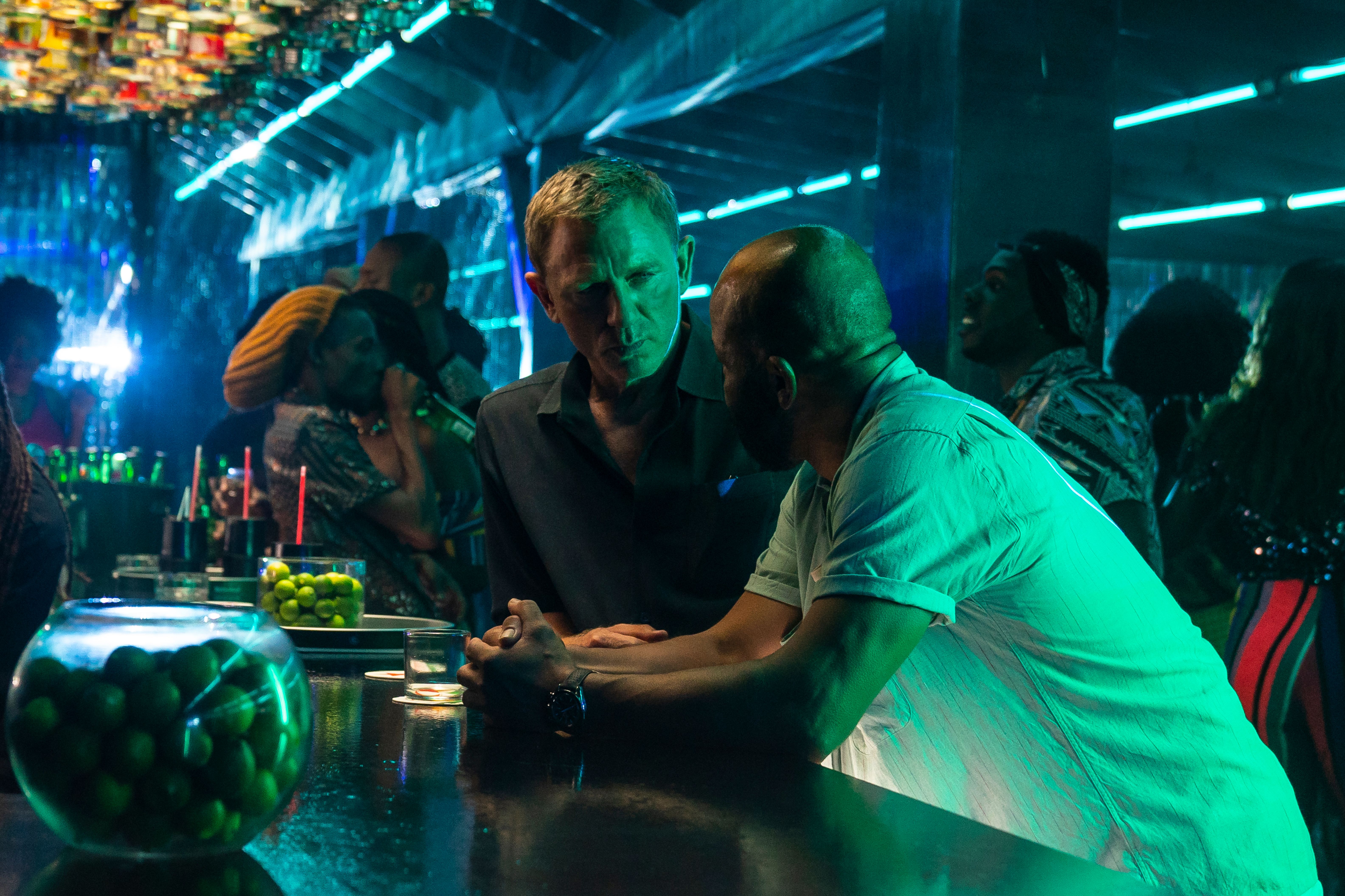Over the past few years, Oscar-winning Cinematographer Linus Sandgren has built up quite a resume. As the director of photography on films like La La Land, First Man, American Hustle, Battle of the Sexes, and The Hundred-Foot Journey, Sandgren has shown he’s got a great eye behind the camera, which explains why director Cary Joji Fukunaga asked him shoot the latest James Bond movie, No Time to Die. In fact, Fukunaga told me it was Sandgren’s fantastic work on First Man that got him the job.
Shortly after seeing No Time to Die, I spoke with Linus Sandgren about his great work on Daniel Craig’s final James Bond movie. While he was pressed for time because he was heading to work on Damien Chazelle’s Babylon, we discussed a wide range of topics, including shooting IMAX and the numerous challenges that come with using IMAX film cameras; the way Fukunaga pushed everyone on set to make every scene better and more ambitious; the process of shooting the film’s impressive oner; and how everything on a Bond movie is done “for real” and on a much bigger scale than other productions.
In addition, a few years ago I was hosting an event at IMAX headquarters, where I ran into Sandgren and some of his team as they finished watching different sequences in IMAX to prepare for No Time to Die. We briefly reminisced about that day, and he revealed what his team watched that day and how it helped them prepare to compose shots for IMAX screens.
Written by Fukunaga alongside Neal Purvis, Robert Wade, and Phoebe Waller-Bridge, No Time to Die picks up with James Bond (Craig) having left active service. Of course, his peace is short-lived when Felix Leiter (Jeffrey Wright), an old friend from the CIA, turns up asking for help, leading Bond onto the trail of a mysterious villain (Rami Malek) armed with dangerous new technology. No Time to Die sees the return of Ralph Fiennes (M), Ben Whishaw (Q), Naomie Harris (Miss Moneypenny), Christoph Waltz (Blofeld) and Rory Kinnear (Tanner). Joining them are franchise newcomers Lashana Lynch, David Dencik, Billy Magnussen, and Ana de Armas.
Read what Linus Sandgren had to say below.
COLLIDER: I'm surprised you have a day off from Damien Chazelle’s Babylon.
LINUS SANDGREN: I don't.
Did you finish?
SANDGREN: No, I shoot nights. So we're starting at four.
That explains a lot. I saw you at IMAX so long ago when you were testing or getting ready to shoot the movie, I think.
SANDGREN: Yes. Years ago.
Yeah, forever ago. What did you learn at IMAX that you took with you when you were shooting the movie?
SANDGREN: We watched films in IMAX, both shot, digitally projected in IMAX and then on film, and we saw 3D films that had shot stereoscopic IMAX. Incredible underwater footage, it's just insane how they made these movies with two IMAX cameras connected. Now there're cameras with two rolls of 65 waiting for fish to eat something and then capture that, so that was pretty insane. We watched a bunch of things at IMAX to see what happens when the format opens up and how to actually frame for IMAX, and how to compose for IMAX, and how the frame opens up when you get into IMAX sequences.
I learned a lot shooting with it because I used it on First Man, briefly, just for the moon sequence, but working with it on a daily basis and reloading a lot of mags, and putting it on various vehicles, and being such heavy cameras…I learned a lot and I'm very pleased with how used to working with them and loving them more during the production. So at the end of production, it was really easy for us and easy for ADs or producers to see those cameras come up because they knew it was going to be stunning being in the larger format.
In the beginning, it may have been a little more daunting to work with that sort of big camera. Then I think it was interesting because we ended up deciding, which I think is the right to do IMAX, is to frame for the middle of the frame or 2:40:1, that's your composition. So that it actually is very easy to shoot it in a combined format, or it's going to go 2:40:1 for release and a lot of the image is cropped out, but it's still, you frame, compose for 2:40:1, just have to make sure the equipment and lighting and stuff can't be in the rest of the image.
We tried to challenge ourselves in the film to go in the air, underwater, in the cold, everywhere with those cameras. Some of that was also driving through narrow alleys with motorbikes fitted with IMAX cameras. We had to test and see, but it felt like it really worked out.
I want to ask you though, what percentage of the movie do you think you actually shot with IMAX cameras?
SANDGREN: I think the movie has like 40 or 50 minutes of IMAX I think. One challenge was also, the DB5 car was so small. Putting an IMAX camera on, it really changed the balance of the car. You had to put two cameras on. It was better to two cameras on at the same time. We had these stunts scenes where two IMAX cameras on that little DB5 in order to just actually keep it balanced. Then we've got two shots in the same setup, so that was pretty good. I would say that with the IMAX cameras though, we kind of didn't care they were bigger and heavier. It was just going to be a little bit harder for us, for the grips, for the camera crew to carry them around and so on and to work with them. But you could put them in the same spots or should shoot handheld. It's actually a little tricky to shoot steady-cam with them because the film moves, but you can do it. It's kind of always was okay to go to those big cameras.
You like doing longer takes. I love longer takes in movies. Which of the shots ended up being the biggest pain in the ass in the movie, in terms of what shot was just like, "You got to be kidding me."?
SANDGREN: That's interesting. I feel we were very ambitious and thinking about how far can we take this scene? And especially Cary, he's quite demanding in terms of pushing us all to think even harder on inventing these scenes or designing these scenes and how can we do it? How can we do this setup even longer? Or you build a set that's as long as the 007 stage in London, which is already like, I don't know, 300 feet or something, and he just wanted it even longer. That's his ambition was, and everyone's ambition was, to explore that.
One tricky one was the long handheld oner because it was a lot of gunfire and a lot of reset time. So we basically can shoot that one time a day, that scene, and then reset and then shoot it again. We could get one take one day and then it's those kinds of situations. But then we countered that by shooting a dramatic scene with a tight schedule, like on any dramatic normal drama movie where you shoot like three to five minutes a day of dialogue, and we would do that too. So it depends on the scenes. Sometimes it was quite challenging. But also a great challenge for me on the film was that most sets were very, very large set builds, especially in Pinewood. We had like 10 stages at the same time plus the exterior. And we had to because it was so big.
It wasn't just a normal wall on the set. It was more steel beams construction, and then they built walls and multiple stories. We had to go in ahead of time to light it from above, if we wanted any type of overhead lighting. So there was lots of logistics regarding how to light all these scenes and how to build them so that the lighting would work and the camera could work in there. A lot of planning like that was challenging and fun, but because I loved that we built so much. The Cuba streets for example, was built in the backlot as large as many backlots in L.A.
We had it lit with 10 mobile cranes for just the night lighting. Everything was there and lit ahead of time. Then that set was sitting there for three months to shoot in it later, at the end of production. We loved shooting in Matera, Italy for how it looked, but at night it had these kind of green, cool, white streetlights and we didn't think that fit the story in that romantic setting when they were in the hotel room.
When Léa Seydoux’s character, Madeleine, goes out on the balcony and looks out over this romantic town. I wanted that to be lit with more flame lights or warm lanterns and she has this flame that she's burning this paper. That had to be controlled. We took out all those streetlights, turn them off, and we put up hundreds of lights that had to be also guarded over multiple weeks by individuals that were taking care of these lights so that no one destroyed them or stole them. They were all connected to generators and once we eventually shot that scene, we could light that all up from controlled by light table from where we were at. It was things that I think most of us making films do, but it was on a larger scale altogether, every scene. We had stunts in the cars, then we had like 10 additional versions of that same car and when it's going to crash.
It's like that kind of scale of things. Everyone, production, the producers have that intention with the bond movies that are so important for them, that it all is filmed and done for real and the stunts are real. They pay a lot of attention to the quality of filmmaking. So when we're there, we felt like we were getting everything in camera. We didn't need to trust things to be fixed in post and that's part of why I love shooting on film too. It's because every day you get the footage back and the way it looks in the dailies, is the way you get them back. That's how the film should look like.
You shouldn't manipulate it in six months later into another type of look or anything. For me, that's why I like shooting on film, because I feel like that helps creating the image already, on an everyday basis in camera. We very much could do that on this film.
No Time to Die is now playing in theaters around the world.




